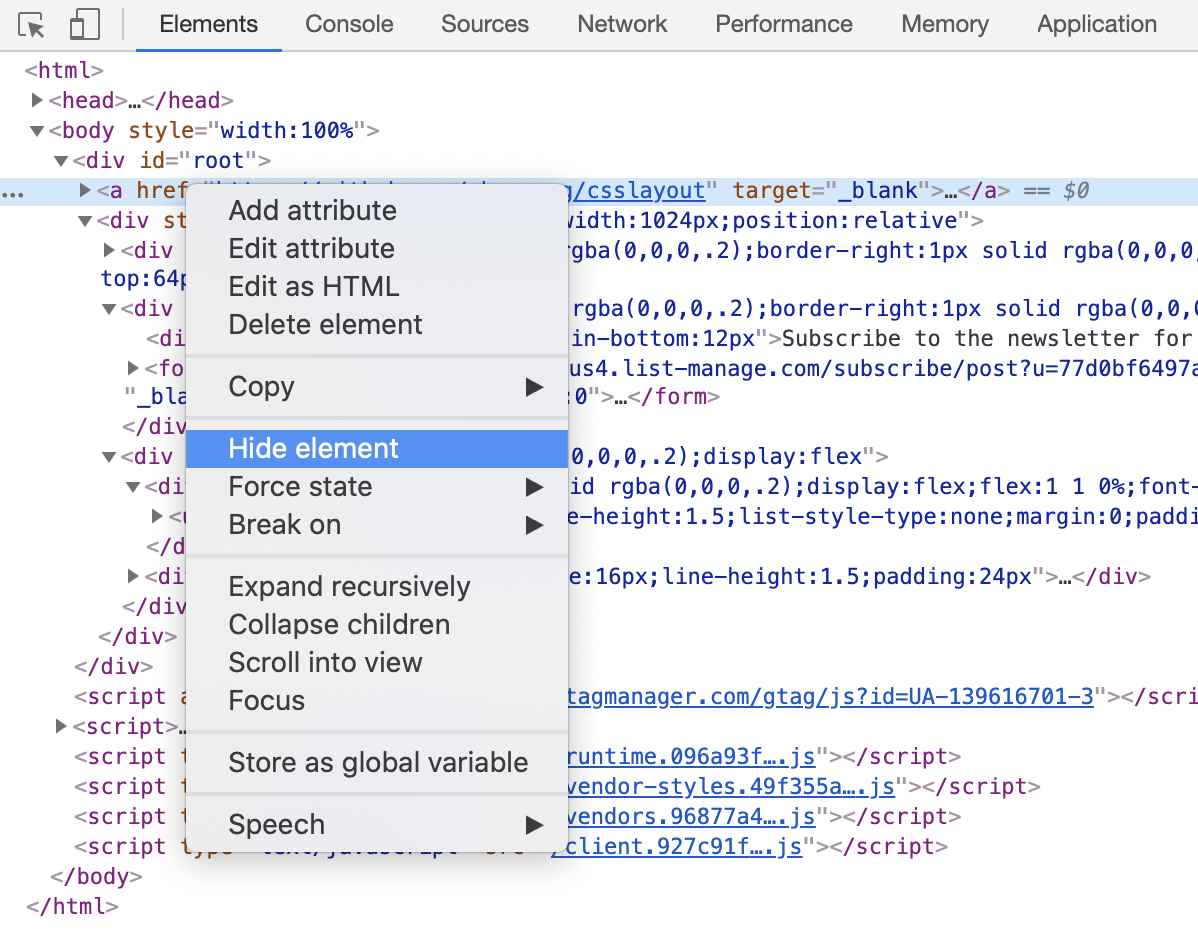display: none vs opacity: 0 vs visibility: hidden
There are three common CSS properties to make an element invisible:
display: noneopacity: 0visibility: hidden
Differences
-
display: nonedoesn't take space when the element is rendered. The other ways still take the space normally. -
The browser will not response to any events of element which uses either
display: noneorvisibility: hidden. Thevisibility: hiddenstyle behaves like a combination ofopacity: 0andpointer-events: none. -
Regarding the accessibility,
opacity: 0is the only property which makes the element accessible in the tab order, and the element's content can be read by screen readers. -
Applying
display: noneoropacity: 0will effect on child elements.visibility: hidden, on the other hand, doesn't change the visibility of any children. -
It's worth noting that if you want to measure the size of element, then you can't use
display: noneat all.
As mentioned in the first difference, an element with
display: none doesn't take any space on the page. Hence, all properties related to the element size, such as clientHeight, clientWidth, height, offsetHeight, offsetWidth, scrollHeight, scrollWidth and width are zero.All properties returned by the
getBoundingClientRect() method are zero as well.Similarly, an element with
visibility: hidden will have empty inner text (equivalent with the innerText property).Tip
With Chrome DevTools, you can hide any element in the page by right clicking the element, and then click Hide element.

In order to do that without breaking the layout, Chrome adds a CSS class named
__web-inspector-hide-shortcut__ to the element:.__web-inspector-hide-shortcut__ {visibility: hidden !important;}
As mentioned above, applying the visibility style to an element doesn't effect on any children, so Chrome adds a following style to make all children invisible:
.__web-inspector-hide-shortcut__ * {visibility: hidden !important;}
Good to know
Nowadays, it's very easy for us to set the opacity for given element and its children with a single line of CSS:
.overlay {opacity: 0.75;}
Many years ago, when the web developers have to deal with the old browsers such as Internet Explorer 6, 7, 8, here is what we have to do in order to support various browsers:
.overlay {/* For IE 5, 6, 7 */filter: alpha(opacity=75);/* For IE 8 */-ms-filter: 'progid:DXImageTransform.Microsoft.Alpha(Opacity=75)';/* For Netscape */-moz-opacity: 0.75;/* For Safari 1.x */-khtml-opacity: 0.75;/* Our good friends */opacity: 0.75;}